Lighting the Past Reflections- Part II
Kieran Cressy, October 2014-June 2017, reminisces about his time on Lighting the Past.
I joined the Lighting the Past team on October 12th 2014 as a second year undergraduate studying Theology and Biblical Studies. I’m convinced that what tipped the selection process in my favour was the fact that I was currently taking Biblical Hebrew and Koine Greek – after I was hired, I found myself in a team full of Master’s students and PhD candidates. To say I was intimidated was a little bit of an understatement!
In my time at Special Collections, working on LtP, I created 2,779 bibliographic records, and 2,978 item records over a period of 3 years. I worked with three different lead cataloguers, at least a dozen or more team mates who came and went over the years, and wrote a number of blog posts for Echoes from the Vault.
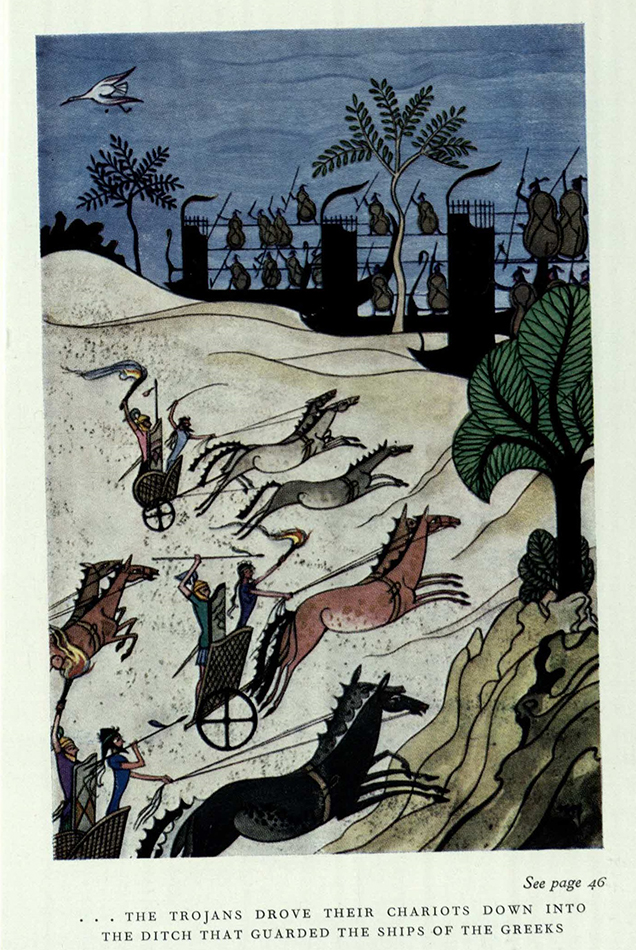
LtP was as much a part of my university experience as my actual degree – it gave me a chance to interact with a side of the university community I never would have otherwise encountered. I got to talk to other cataloguers, librarians and archivists about projects they were working on, and acquisitions they had made. I got to know PhD students from so many other departments, and hear all about their research and theses. I made friends through the stints of not-so-interesting Latin German Philosophical treatises (though I’m sure those are fascinating to someone, as is the beauty of the project!), and we ooh’d and aah’d together at fantastic discoveries of particularly old, rare, or simply just cool, books. I loved every single member of our team, and I think so fondly, so often, of the times we’d laugh and joke and share with each other in the office. We were such a tight-knit team, and everyone looked out for each other – I could never have asked for a better group of people to go on this adventure through time with.
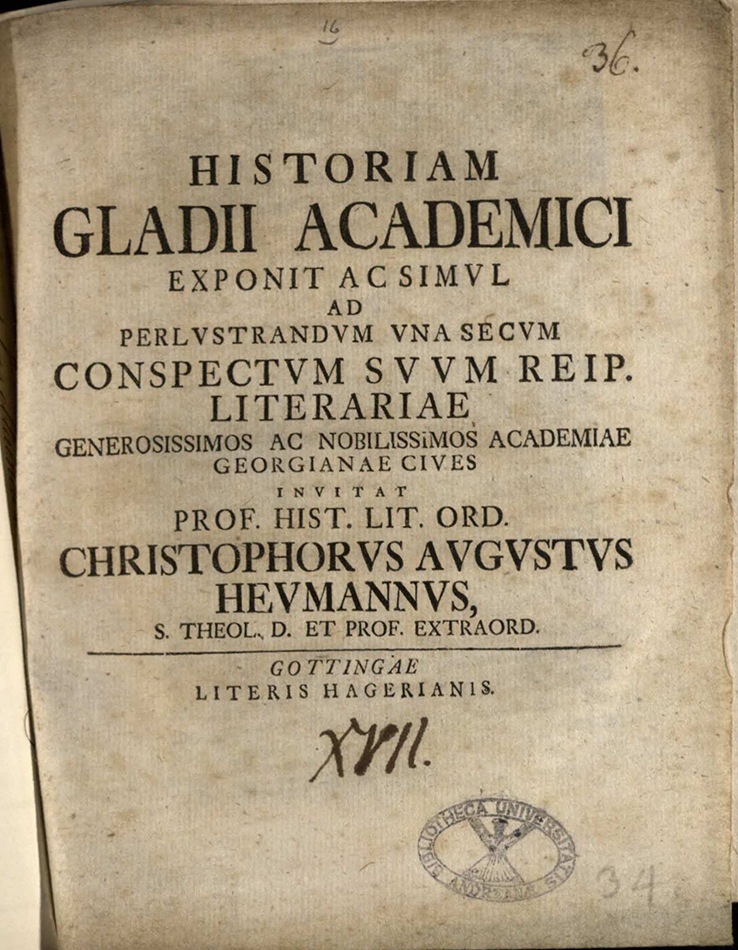
There are a number of memories I hold most fondly from my years with LtP. The first happened a few months after I had started. I believe we were a few shelves into some historical treatises of American natural philosophical societies. I was in the office on my own at the time – my fellow cataloguers weren’t in that day, and our project lead had stepped out for a moment. I opened a book with some fantastic diagrams of scientific principles – physics, astronomy, engineering. I marvelled at these fold out pages for a while, and flipped to the front of the book to discover it was from the late 18th century. Amazing – this was a scientific journal from the very early years of the American Republic! However, what really grabbed my attention were two inscriptions opposite the title page. The first was one of the editors of the journal, which had been published in Philadelphia, PA – very interesting, and certainly historically significant. The second part was really what got me however.
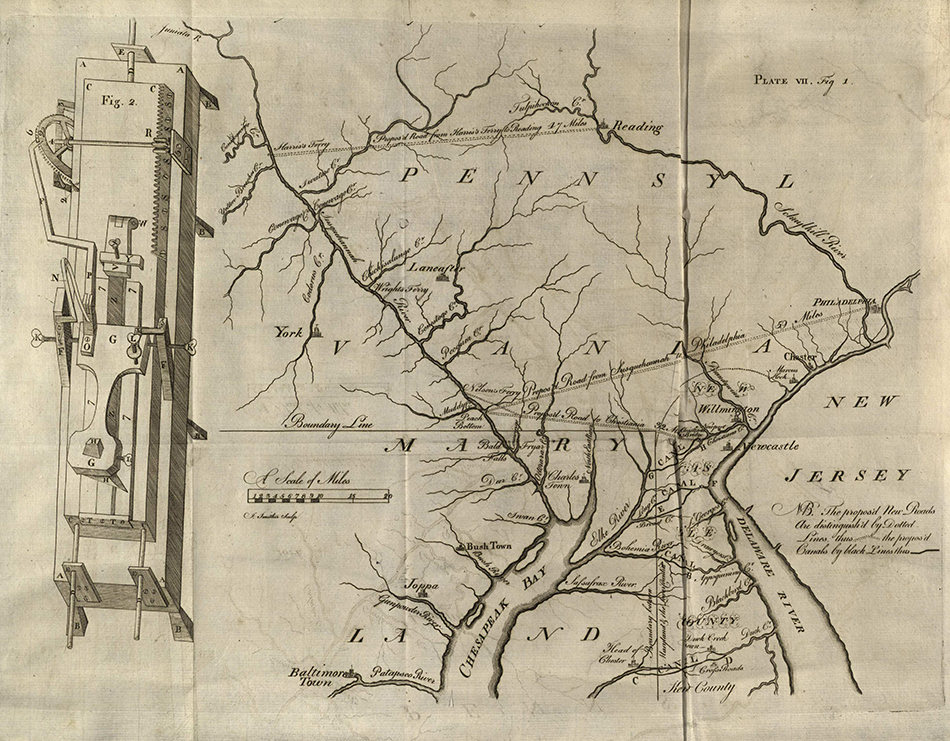
A full inscription, written right there in front of me on the page, detailed how the book had been sent first to London from Philadelphia, and that now it would be forwarded from London to the University of St Andrews. The second inscription’s author was none other than Benjamin Franklin, one of the luminary figures in the constellation of America’s founding pantheon. Dr Franklin had received an honorary degree from the University some years prior, and had agreed to send this copy of the American scientific journal to St Andrews, as ‘its most humble and obedient servant,’ if I remember his phrasing correctly. I was holding in my hands a book that had been signed and written in by Benjamin Franklin himself, a giant in western history. I was absolutely dumb-founded, star-struck, and the worst part of it all was that at the time, I was totally alone in the office, with no one to share it with!

Another incredibly fond memory was of a particular blog post I and another cataloguer had written. It was Chapter 5 in a series titled ‘Where We Find New Old Books’. The item in question was a collection of works bound together, all dating between c.1527-1537. What followed was such an exciting period of research as we tracked down printers using the devices they had stamped in the books, tracing the original location of the printing press, and scouring old maps and wills from Paris to track down all the information we could about where these publications had come from. I found it absolutely fascinating, and it felt like something straight out of the Da Vinci Code, or Indiana Jones – I highly recommend you check out part 1 and part 2 of the blog post that Emily and I wrote on it!
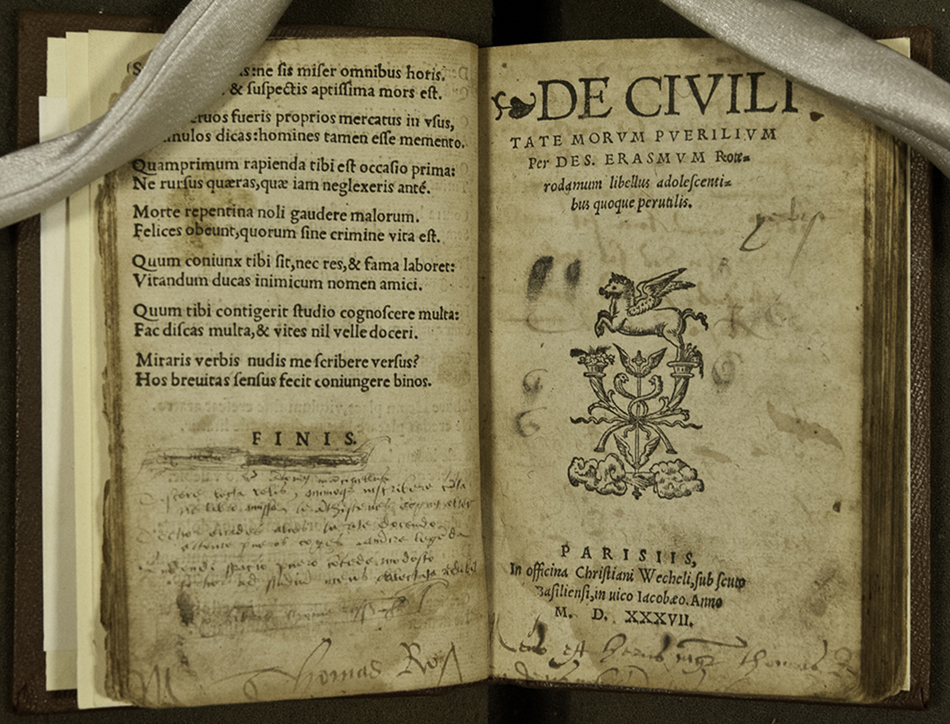
My final memory I’d like to share is really a collection of memories, or at least an amazing reality of getting to work on a regular basis with the University’s incredibly rare books. Once in a while, especially when we had to pause slightly in our cataloguing in order to wait for a technical solution, a confirmation from our lead cataloguer, or something else, one could spend some time in the stacks. On one such occasion, near Christmas of my second year with LtP, I thought to look up whether we had any books from some famous figures of English literature in the 20th century. I was thinking especially about Tolkien, one of the most profound influencers of fiction and writing in my own life. I discovered we had a number of records that matched Tolkien – including a full set of 1st edition copies of The Lord of the Rings, which included the maps Tolkien himself originally drew for that first publication. If memory serves me correctly, there were only 3,000 copies of each volume published in the first edition’s first printing. At the time, a few years previously, a full set had sold at auction for £10,000, and I’d be surprised if that hadn’t increased even further since.
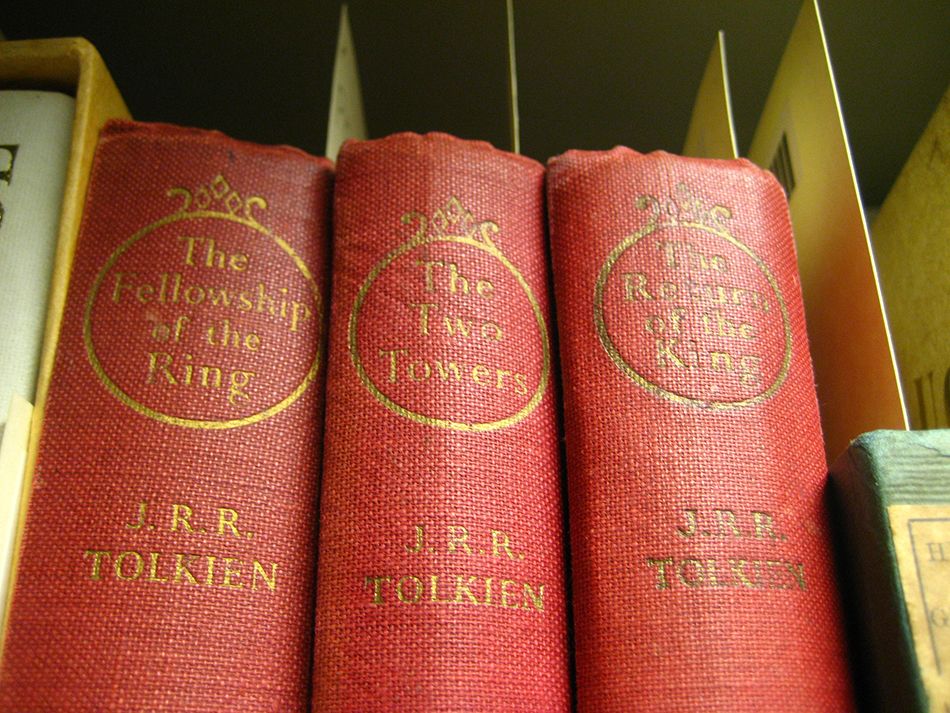
So, I went into the stacks armed with the reference I needed, and went to see if I could find them. I was not disappointed. Though missing their dust jackets, the three volumes, bound in red cloth, were sat on the shelf right where they should be. I gingerly and gently gathered the trilogy from the stack, and brought them carefully to the office. I got to spend just a few minutes looking through them, marvelling at Tolkien’s original maps, and just generally absolutely freaking out about how nerdy and historically cool this all was. The project soon marched on, and I put the books back into their resting place, but that memory will never leave me – I got to hold in my hands 1st edition copies of Tolkien’s Lord of the Rings. It was everything to me.
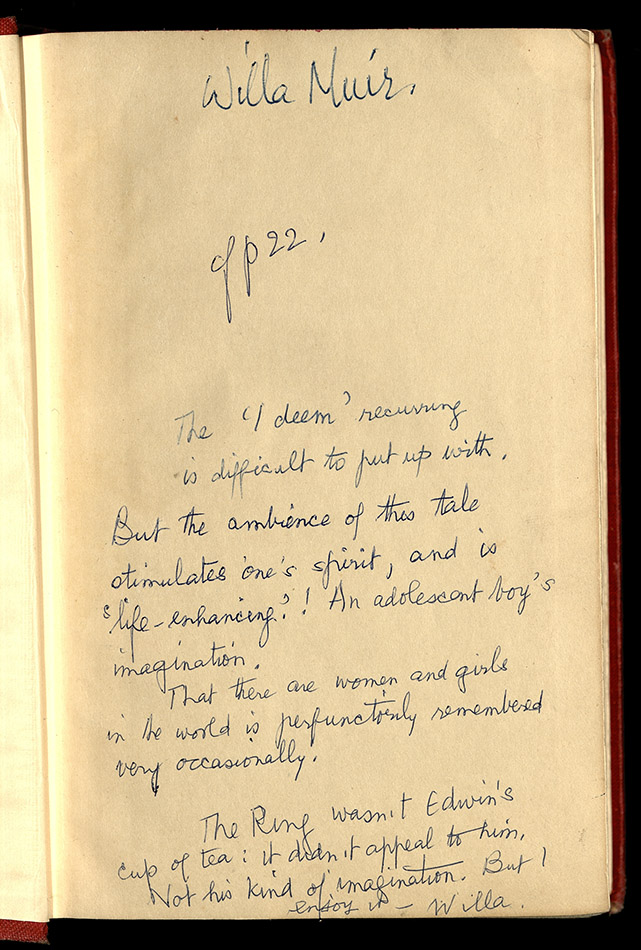
The ‘I deem’ recurring is difficult to put up with. But the ambience of this tale stimulates one’s spirit, and is ‘life-enhancing’.! An adolescent boy’s imagination.
That there are women and girls in the world is perfunctorily remembered very occasionally.
The Ring wasn’t Edwin’s [Edwin Muir] cup of tea: it didn’t appeal to him. Not his kind of imagination. But I enjoy it – Willa.
Finally, I thought I’d share one of the things I feel I learned most at Special Collections. I learned that people heavily, heavily, romanticise old books. Films like Harry Potter or Lord of the Rings feature old books and documents so prominently, and I think many people imagine that they smell distinguished, they feel crisp and ancient to the touch, and that they are all wise and witty. In reality, old books are more like old men, I’ve found. They often smell funny, are usually pretty grimy, and are more than occasionally a little racist. But every once in a while, and frequently where the University Library’s Special Collections are concerned, they have stories to tell, the likes of which we simply do not have any more. The University’s collections are treasures; they are relics; they are history held physically in the hands. They fascinate and entertain, and they surprise you constantly. If you’re reading this and have never had the opportunity to peruse the University’s collections, many catalogued for the first time by myself and our team, I cannot encourage you enough to visit the Special Collections website, and request to spend time with a volume or two in the reading room. I promise you’ll never regret it. Just browse here and make an appointment to see whatever takes your fancy.
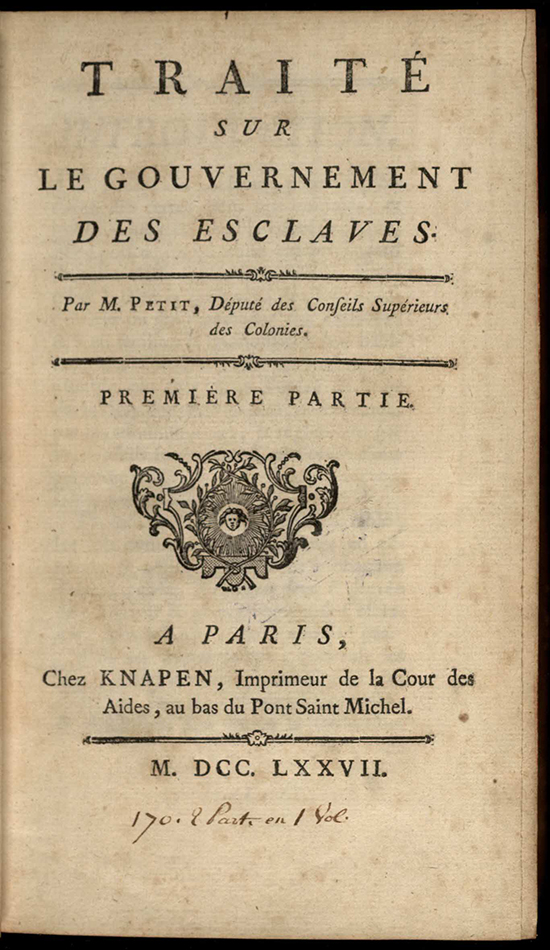
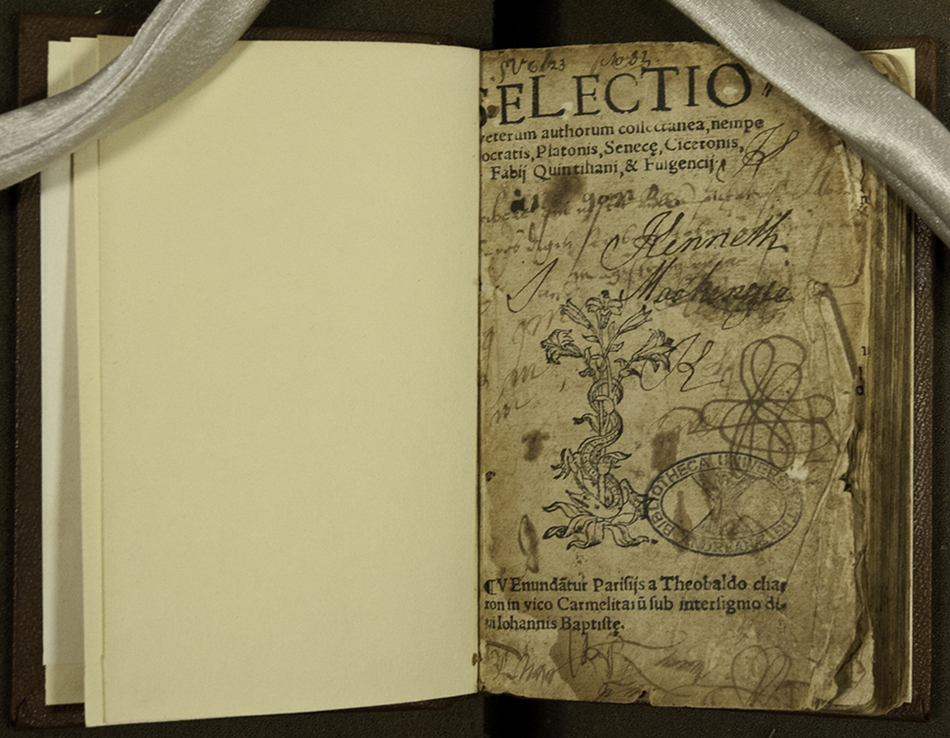
Inspiring:)